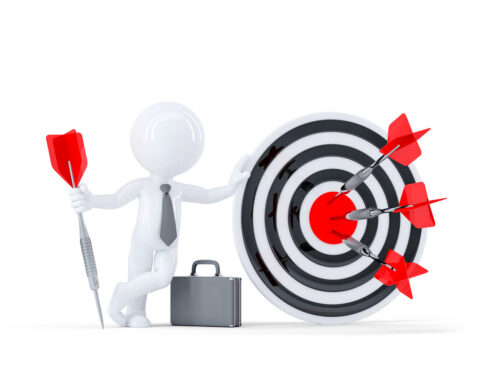In any organization, culture evolves every day. The culture of any community, for that matter, evolves every day as the people inside of it evolve, too. Workplace culture grows in the same way, with new stories, beliefs, assumptions, and shared understandings being made all the time. The culture of your organization is not just the attitudes held by management; it is measured in a number of ways, tangible or intangible. One aspect that identifies an organization’s culture is artifacts.
What Are Artifacts?
You may know artifacts as objects of significance that reveal something about a past culture in archaeology. This same concept applies to your organization as well. These are not quite hidden treasures from explorers or dinosaur bones but more like the coffee maker in your office’s kitchen or the colorful paintings in the reception area. These artifacts can be easily presented or communicated to employees, customers, or even by your manager or recruiter staffing agency when interviewing potential new hires.
An artifact is an object that holds cultural significance, though workplace artifacts are either tangible or intangible. They can present themselves in everyday interactions at your workplace. They can be surmised by customers when they speak to customer service. Whether or not they’re recognized as artifacts by someone within or outside your organization, they are still seen and heard, defining your workplace’s culture all the time.
Why Are Organizational Artifacts Important?
So why are artifacts important to recognize? Where do they present themselves in your organization? From the tone of the team leader in 9 AM meetings to the stickers on your office’s whiteboard, every piece of your organization tells a story. Identifying what each aspect of your organization conveys is important in nurturing your company’s culture and making sure it’s communicating the values that bring out the best in your team.
How often and how enthusiastically are employees working together and reaching understandings? What do interactions look like at the end of the day? What does the turnout look like at company parties? These aspects all exist as artifacts of company culture. Not all of these results are knowingly made at every moment, but all at once, they indicate the organization’s culture.
Artifacts, of course, can also be physical objects that can be more easily identified. The old coffee maker and drab chairs in meeting rooms exist as artifacts, telling a story about the workplace that is not favorable. Whether or not they’re intended to communicate a trait about their surroundings, they still do. Keeping in mind how pervasive this cultural concept is and how well each piece communicates your desired company culture is key to identifying where it’s succeeding and where it can be improved.
Can Artifacts Be Improved or Replaced?
Just as any aspect of your company’s culture can be transformed, so can artifacts. Making modifications to company events, meetings, and decor are more tangible adjustments to make. Each employee’s own evaluation of their language, clock-out practices, approach to reaching understandings with others, and additional interactions with their peers produce individual artifacts. The questions and interview processes used by recruiting and staffing agencies are considered artifacts of the company, too.
As we’ve discussed, physical artifacts are the most easily identifiable to start refining or re-forming your organization’s culture. A change in decor is an obvious start. Putting more care into your company’s surroundings will be noticed by employees, which will set the precedent that their environmental needs are cared for. Adding a ping pong table or arcade machine to an empty room at your workspace could be the start of a fun and engaging break room, becoming a new artifact.
Meeting agendas, quarterly reviews, and peer communication all have a certain language and tone attached to them. As with physical artifacts, the language and tones taken to each of these aspects can be modified over time. Maybe adding a personable item to the beginning of each meeting will make a positive cultural change. Perhaps opening up space for employees to chat with their managers more often will become a well-known artifact of your company. This new meeting item or communication standard can become new artifacts that were either improved from older ones or created to nurture organizational culture.
How This Concept Applies to New Hires
As you could guess, no one artifact exists in a vacuum. Each practice, communication policy, company award, cubicle, and even every painting hung up on the walls accumulates to send an overall message to every member of your organization and anyone else who witnesses it. Since artifacts are not only created or transformed by upper management, they are also carried by every member of the team. This must be remembered during the hiring process so that your recruiter staffing agency or headhunter transfers these artifacts in a way representative of your company.
Every potential new hire is evaluated based on how well they fit the company culture. While what artifacts they contribute to the company cannot be fully judged or witnessed in the interview process, there are some to take note of. For one, the candidate’s verbiage can be evaluated as one that either does or doesn’t match your organization’s values and culture. How they speak of their own skills, what they’ve contributed to former employers in the past, and how they hope to contribute to your company reveal their own artifacts. Tone, word choice, and personality produce their own artifacts that you must determine as conducive or disruptive to your workplace and team synergy. Just as a recruiter staffing agency must accurately express your organization’s artifacts, you must make sure they accurately capture what the new hire would bring.
The Weight of Artifacts
It’s critical to remember that some artifacts weigh more than others. This is determined by the position level of the creator or presenter as well as how public the artifact is.
As an example, let’s say that a recruiter staffing agency posts about their business on LinkedIn but frequently misspells the company name; this typo becomes a negative artifact. With such a typo on a social network with more than 500 million business and career professionals scattered around the globe, it holds considerable weight since it’s highly visible to current and potential customers. As insignificant as it may sound to some, this could be taken in a number of ways by people inside and outside the organization. This may indicate a lack of attention to detail, low professionalism, or inadequacy to hire good candidates, which all result in a loss of potential business for the company.
The same notion extends to positive artifacts. For example, let’s say a landscaping company just won a local award for being reliable, customer-driven, and providing satisfactory work that exceeds customer expectations. The award itself becomes a positive artifact for the organization, and it has its own results that will drive sales and boost the team’s morale. The results that company artifacts produce are not always controllable, but hypervigilance and the intention to take positive actions go a long way in preserving beneficial artifacts. If you’re using headhunters to staff your company or working with a recruiter staffing agency, presenting positive artifacts to promising candidates will encourage them to continue pursuing your credible organization.
Artifacts of your organization are just one piece of the cultural puzzle, but their pervasive nature and flexibility to evolve should not be unaddressed. By practicing awareness, evaluating the language you participate in in the workplace, and putting consistent care into your organization’s culture, each member of the workplace can take part in the creation and preservation of valuable organizational artifacts.





